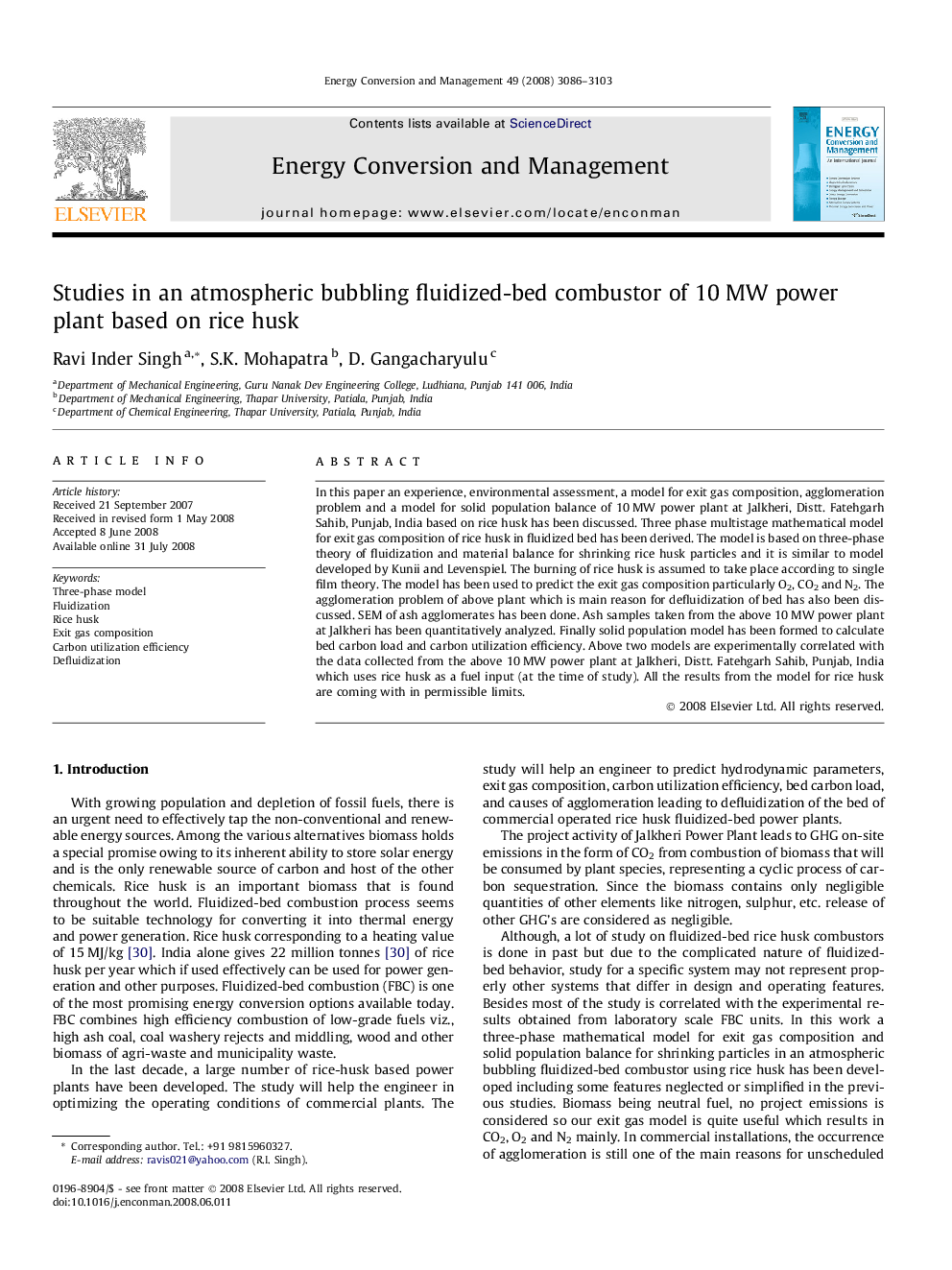| Article ID | Journal | Published Year | Pages | File Type |
|---|---|---|---|---|
| 766446 | Energy Conversion and Management | 2008 | 18 Pages |
In this paper an experience, environmental assessment, a model for exit gas composition, agglomeration problem and a model for solid population balance of 10 MW power plant at Jalkheri, Distt. Fatehgarh Sahib, Punjab, India based on rice husk has been discussed. Three phase multistage mathematical model for exit gas composition of rice husk in fluidized bed has been derived. The model is based on three-phase theory of fluidization and material balance for shrinking rice husk particles and it is similar to model developed by Kunii and Levenspiel. The burning of rice husk is assumed to take place according to single film theory. The model has been used to predict the exit gas composition particularly O2, CO2 and N2. The agglomeration problem of above plant which is main reason for defluidization of bed has also been discussed. SEM of ash agglomerates has been done. Ash samples taken from the above 10 MW power plant at Jalkheri has been quantitatively analyzed. Finally solid population model has been formed to calculate bed carbon load and carbon utilization efficiency. Above two models are experimentally correlated with the data collected from the above 10 MW power plant at Jalkheri, Distt. Fatehgarh Sahib, Punjab, India which uses rice husk as a fuel input (at the time of study). All the results from the model for rice husk are coming with in permissible limits.
